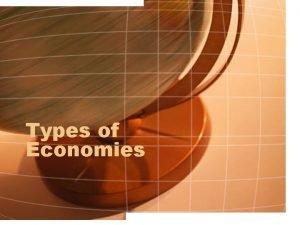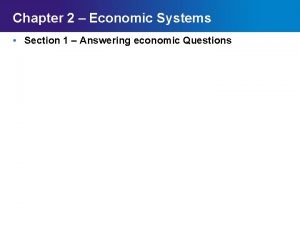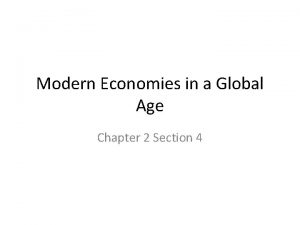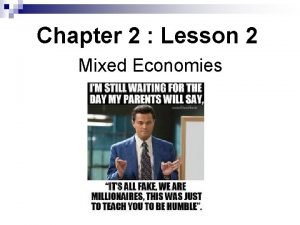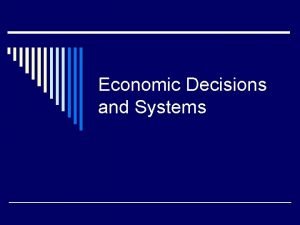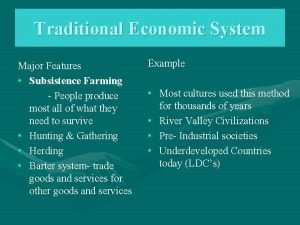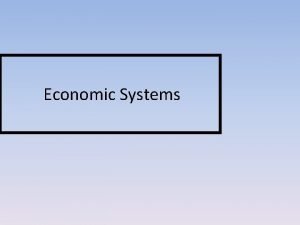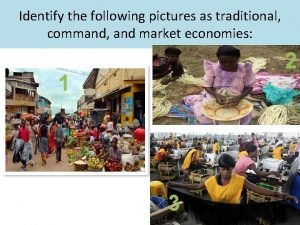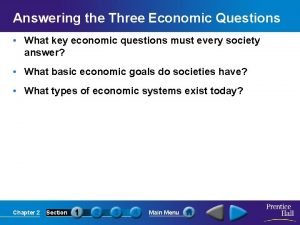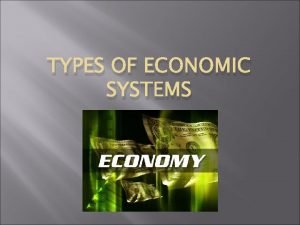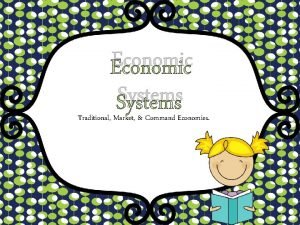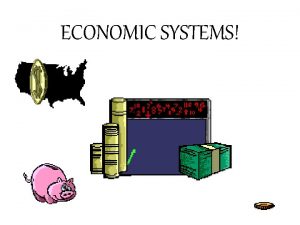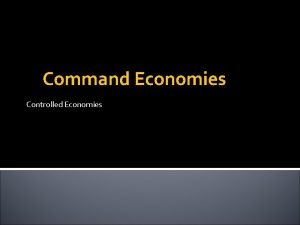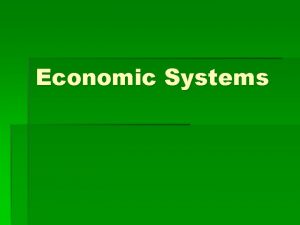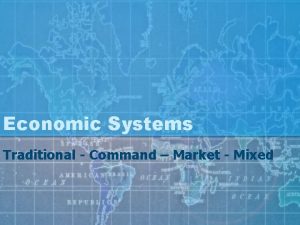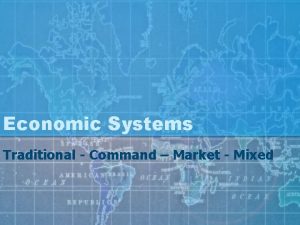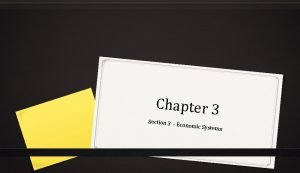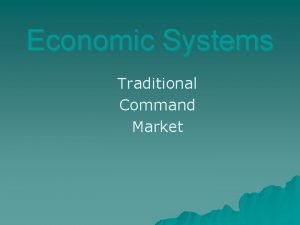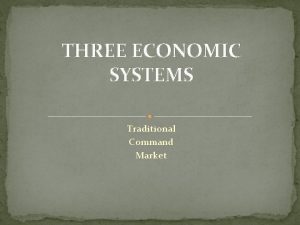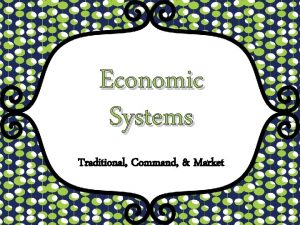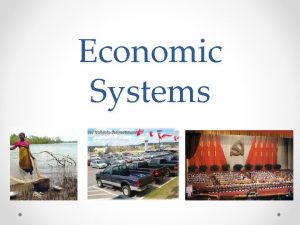Economic Systems Chapter 2 Section 1 Traditional Economies


















- Slides: 18

Economic Systems Chapter 2 Section 1

Traditional Economies In a traditional economy, roles and economic decisions are defined by custom. u Examples include the central African Mbuti, the Australian Aborigines, and northern Canada’s Inuits. u


u The advantages of a traditional economy is that everyone knows which role to play and there is little uncertainty about WHAT, HOW, and FOR WHOM to produce.

u A disadvantage of a traditional economy is the discouragement of new ideas and new ways of thinking. This leads to a lower standard of living than in other societies.

Question u How would your life be different if you had grown up in a traditional economy?

Command Economies In a command economy, a central authority determines WHAT, HOW, and FOR WHOM to produce. u Command economies include North Korea, Cuba, the former Soviet Union. u

two advantages the ability to drastically change direction in a relatively short period of time u many basic health and public services are available at little or no cost. u


disadvantages consumer needs may not be met u hard work is not rewarded u the necessary decision-making bureaucracy delays decisions u little flexibility to deal with day-today problems u and individual initiative goes unrewarded. u

Question u In the 1990 s, many countries, especially in Eastern Europe, moved from command economies toward market economies. What problems do you think they faced as they made this change?

Question u u In what ways are traditional and command economies alike? In what ways are they different? In both, production decisions are already made and individual initiative is discouraged. In traditional economies, the individual’s role is defined by customs, while in command economies, a central authority defines the individual’s role.

Market Economies u In a market economy, producers and consumers determine WHAT, HOW, and FOR WHOM to produce. In each market transaction, the consumer’s dollar acts like a “vote, ”.

u Examples include the United States, Canada, Japan, South Korea, Singapore, and parts of Western Europe.


advantages u u u the ability to adjust to change the high degree of individual freedom the small degree of government involvement the ability to have a voice in the economy the variety of goods and services created the high degree of consumer satisfaction.

Disadvantages include the inability of the market to meet every person’s basic needs. u inadequate job of providing some highly valued services such as justice, education, and health care. u high level of personal uncertainty and the prospect of economic failure. u

FYI u In the United States, individuals usually make their own economic decisions. Sometimes, however, the government makes choices that override individual decisions. During World War II, for example, the government limited the production of such goods as washing machines, refrigerators, and automobiles.
 Traditional economies definition
Traditional economies definition Chapter 2 section 3 centrally planned economies answer key
Chapter 2 section 3 centrally planned economies answer key Describe how a centrally planned economy is organized
Describe how a centrally planned economy is organized Chapter 2 section 4 modern economies worksheet answers
Chapter 2 section 4 modern economies worksheet answers Chapter 7 section 1 regional economies create differences
Chapter 7 section 1 regional economies create differences Economics unit 1 lesson 2 difficult choices
Economics unit 1 lesson 2 difficult choices Modern economies in a global age
Modern economies in a global age Chapter 2 lesson 2 mixed economies
Chapter 2 lesson 2 mixed economies Chapter 2 economic systems and decision making answer key
Chapter 2 economic systems and decision making answer key Chapter 2 economic systems answer key
Chapter 2 economic systems answer key Chapter 2 economic systems and decision making
Chapter 2 economic systems and decision making Chapter 2 economic systems and decision making
Chapter 2 economic systems and decision making Chapter 1 economic decisions and systems answer key
Chapter 1 economic decisions and systems answer key Chapter 2 economic resources and systems
Chapter 2 economic resources and systems Traditional economic system example
Traditional economic system example Traditional economic system example
Traditional economic system example Traditional economic system example
Traditional economic system example Pictures of traditional economy
Pictures of traditional economy Chapter 2 section 1 answering the three economic questions
Chapter 2 section 1 answering the three economic questions
